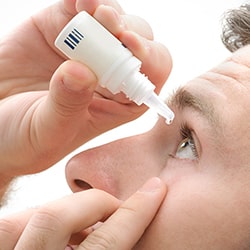Conjunctivitis (Pink eye)
What is conjunctivitis?
Conjunctivitis, or pink eye, occurs when the mucus membrane covering the outer surface of the eyeball gets inflamed. Usually, a viral or bacterial infection is the cause, but allergies, contact lenses, environmental irritants, and defective tear ducts can also trigger the problem. People with pink eye wake up to find their eyes irritated and crusted shut with a sticky discharge. Though pink eye can be uncomfortable and can be highly contagious, it rarely causes any permanent damage. Treatment depends on the type of conjunctivitis contracted. Some types resolve themselves without medical treatment while others require antibiotics. In most cases, a bout of conjunctivitis will run its course within a few weeks.
Conjunctivitis affects the conjunctiva, the protective membrane that lines the eyelids and covers the exposed areas of the white of the eye. The conjunctiva sits on top of the sclera, the white part of the eye, and lines the eyelids. The cornea, the clear, dome-shaped surface that covers the pupil and the blue or brown iris, is not covered by the conjunctiva. The function of the conjunctiva is to keep the eyelid and eyeball moist. Inflammation of the membrane makes the blood vessels more prominent, which gives a red or pink colour to the white of the eye.

Types of conjunctivitis
Seventy percent of conjunctivitis cases are infectious conjunctivitis, which means they are caused by bacteria or viruses. Viral cases are the most common. Infectious conjunctivitis is extremely contagious, and precautions should be taken to prevent its spread.
Thirty percent of conjunctivitis cases are noninfectious. They can be a result of allergies, partially blocked tear ducts, or a variety of local irritants in the eye, including contact lenses.
Viral and bacterial conjunctivitis can affect one or both eyes. Allergic conjunctivitis affects both eyes.
Risk factors of conjunctivitis
Exposure to somebody with a viral or bacterial form of conjunctivitis is a major risk factor. Typically, after the first symptoms occur, people with conjunctivitis are contagious for seven to 14 days.
Viral and bacterial conjunctivitis are both common among preschool children.
For noninfectious conjunctivitis, exposure to allergens or poorly fitting contact lenses can increase the risk.
Can’t find what you’re looking for? Ask our Eye Care Experts!








